Gavin Harrison's drum setup revealed: Porcupine Tree's kit in pictures
Drummer talks odd time signatures and familiar configurations
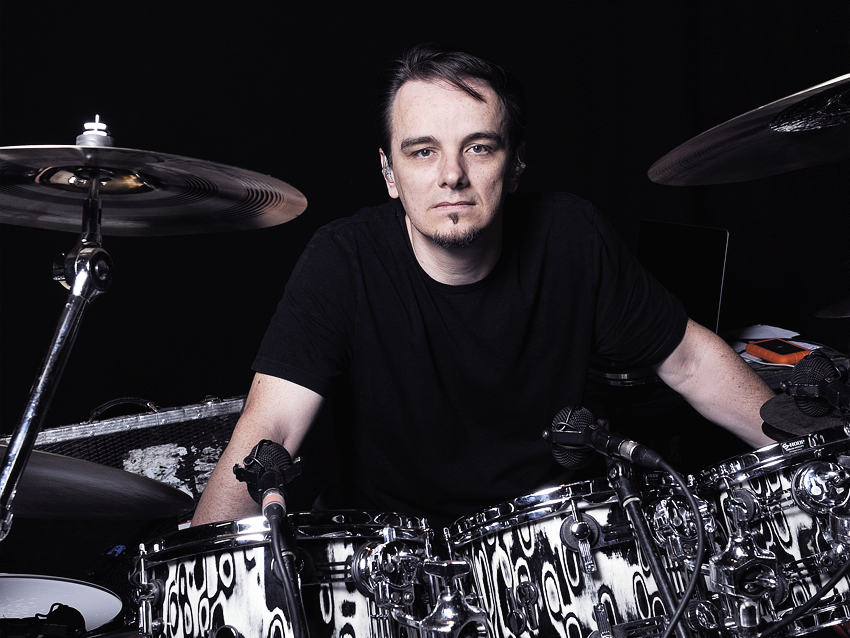
Porcupine Tree's Gavin Harrison's drum setup
Having built his reputation as a session player in a career that covered the spectrum from Iggy Pop’s high energy punk to Lisa Stansfield’s smooth soul and all points in-between, Gavin Harrison is widely regarded as one of Britain’s most exciting and innovative drummers.
Since replacing Chris Maitland in Porcupine Tree in 2002, the band have gone on to the play the biggest gigs of their career.
Between touring commitments and holed up in his home studio, Rhythm magazine caught up with Gavin to talk rhythmic illusions and take a good look at his drum setup – the highlights of which you can see in this gallery.
You can read the full interview in Rhythm 183 (available now as a back issue), or check out the latest funk special issue 184 featuring Zigaboo Modeliste and Stanton Moore.
- Find your next setup with our guide to the best drum kits
First up: Gavin Harrison talks familiar kit configurations
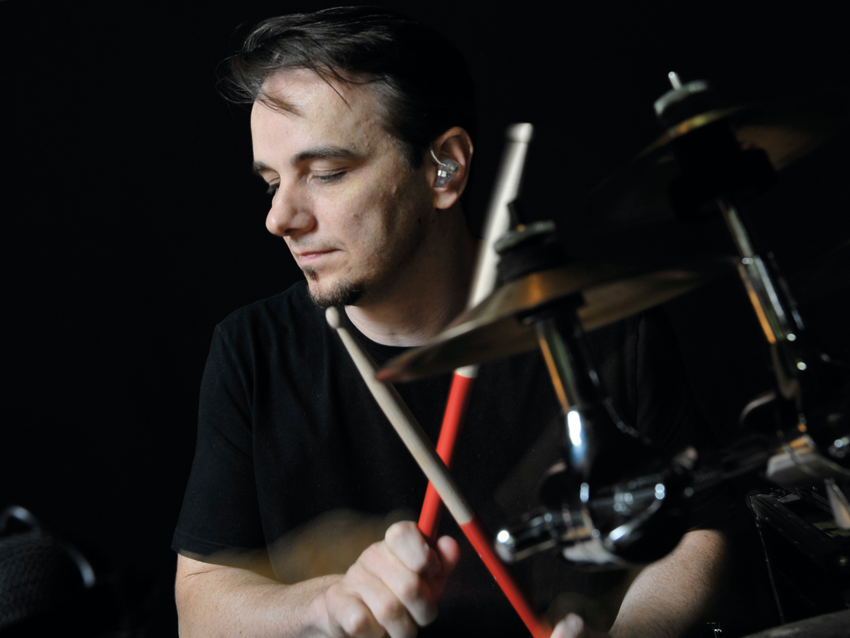
Kit configuration
You seem to have settled on your current drum set-up for some time. What is it about this configuration that works for you?
"This configuration with 8", 10", 12" on the top and two floor toms, I guess I’ve been doing for about the last 25 years. Maybe it was fashionable 25 years ago, I don’t know."
"It’s a very comfortable set-up for me to have five toms because it covers such a wide range, from the 8" to the 16" there is a big difference in pitch so I naturally feel where I want the pitches to be without having to think about it or look at the drums."
"I can play the drums with my eyes closed and that’s the beauty of having the same set-up all the time, you know where everything is so when you’re in expression mode you’re not looking at the drums or thinking, ‘I need a little drum,’ or ‘I need a low sound.’ It’s been pretty much in the same shape for a long time."
Next: Gavin Harrison's drums
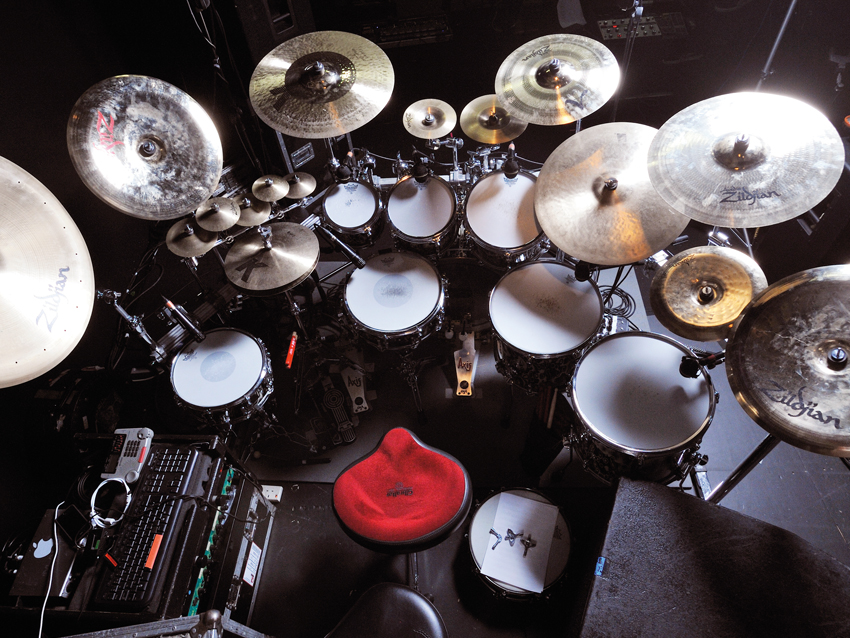
Drums
Kit and snare
Sonor SQ2 kit in Golden Madrone finish: 8"x7", 10"x8" and 12"x9" tom toms; 15"x13" and 16"x14" floor toms; 22"x17" bass drum; 14"x5" Birch snare, 12"x5" Maple snare.
Heads
Remo heads: Vintage Coated Emperors on toms, Clear Ambassadors on resonant side; Powerstroke 3 Clear on kick batter, Standard Sonor head on resonant side; Coated CS on snare, Hazy Ambassador on resonant side.
Pedal
Axis A21 Double Pedal.
Sticks
Vic Firth Rock Hickory sticks.
Extras
Korg Wavedrum (more on this later).
Next: Gavin Harrison's cymbals
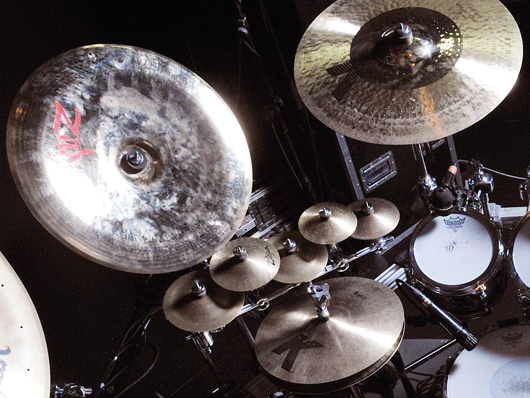
Cymbals
Zildjian cymbals
22" Swish Knockers without rivets, 16" Oriental China trash, five custom-made chimes, 13" K hi-hats, 18" K crash, 7" & 9" Custom Crash Bells, 15" A Custom crash, 20" K ride, 18" A Custom crash, 12" Oriental China Trash, 18" Z Custom china.
Next: using electronics
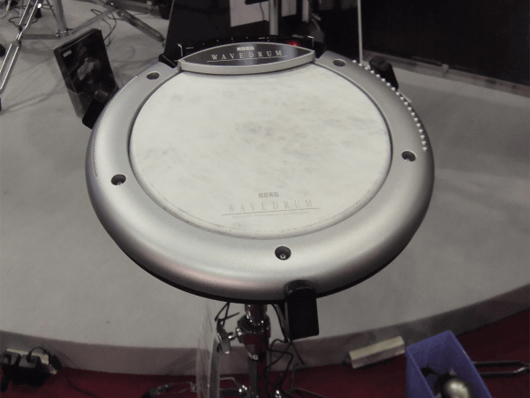
Electronics (including Korg's Wavedrum)
You’ve brought some electronics into your mix with the Korg Wavedrum.
"I’ve actually got the original Wavedrum as well, that cost about the price of a car. I love it. I’m going to use it on Porcupine Tree’s shows soon."
"I’ve steered away from electronics for a very long time. Back in the ’80s I was triggering samples while I was playing with Iggy Pop and in the ’90s when I was playing with Lisa Stansfield. I pretty much hate electronics because they are temperamental. They’ll trigger, they’ll double trigger and then they won’t trigger. It is very hard to get them to go consistently and in time. They drove me crazy so I gave up using pads and electronics."
"I don’t really enjoy playing pads, just hitting a piece of plastic and hearing a sample come out doesn’t really vibe me up but the Wavedrum is different. It feels like you’re involved in the sound because the head is live. Everything you do on the head, if you’re brushing it or scraping it with your fingernails or muting it with your hand, all that is coming through mixed in with the electronics so you do feel like you’re making a sound that you’re creating."
Next: odd time signatures
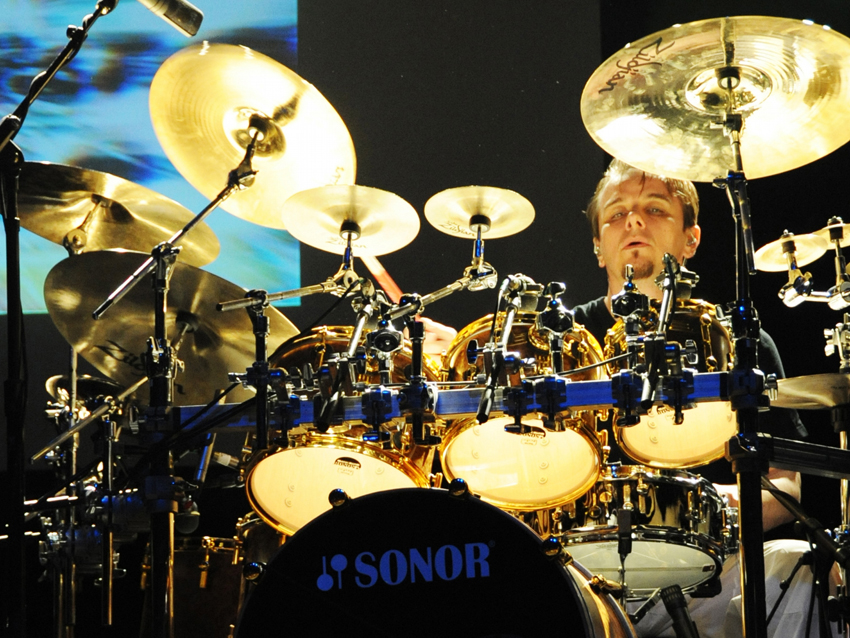
Odd time signatures
Do you naturally gravitate towards playing in odd time signatures?
"I like odd times, of course, I like playing in 4/4 as well. The thing I like the most is if it’s got a groove. It doesn’t necessarily have to have a 2 and 4 backbeat to have a groove."
"We’ve heard possibly millions of variations of patterns in 4/4 and that’s fine, but bands have not explored odd times as much as they have explored 4/4. You can do some interesting things in odd times and you can even disguise odd times so they don’t sound odd."
"Sometimes I’ve reversed that and tried to make 4/4 sound like it is not in 4/4. A good example of that is a song we recorded called Mother And Child Divided which is all in 4/4 but it sounds like it is in three groups of 10/16 plus 2/16 so it makes up 32/16 which is the same as two bars of 4/4."
"There is another song from the last record called Bonnie The Cat which is all in 4/4 and I wanted to try to make a pattern that didn’t sound like it was in 4/4. I like rhythmic manipulation, I think that is very interesting."
Next: superhuman prog chops
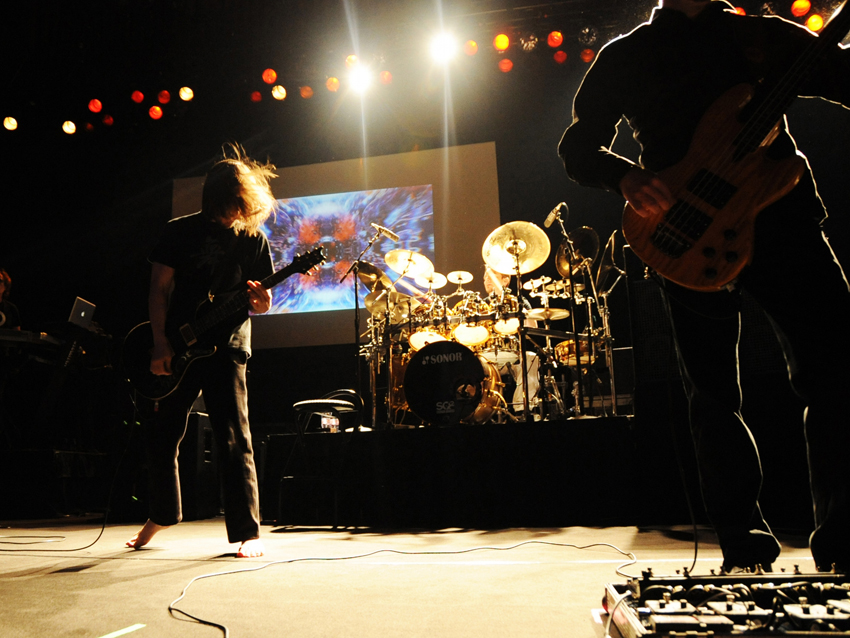
Superhuman prog chops
Do you think superhuman chops are a requisite for progressive music?
"No, not at all. I think if you are going to play fast things then obviously you need some amount of technique. I don’t think we play any fast songs really."
"If you are going to swap time signatures quite a lot, which we do in Porcupine Tree, then you need to have a handle on those time signatures. When I was a kid I couldn’t even play in 3/4 without getting lost. It’s probably my fear of getting lost in odd time signatures that made me want to study them."
"When you start playing in 5/4 you play the most simple parts, like Take Five - you play a pattern of 3 and a pattern of 2 and you keep hitting a crash cymbal every ‘1’ to keep confirming that you are still in 5. It takes some time and confidence to start thinking, ‘Alright, I want to be as free and comfortable in 5/4 as I am in 4/4.’ You just need to practise it."
"I used to have a little Roland TB-303 Bass Line, it was this little silver box and you could program bass lines into it. So I’d program bass lines in odd times and it would loop continuously so I could play for hours just in 7. After 30 minutes, it’s not feeling that odd. It’s just we’ve listened and practised so much in 4/4 that when it comes to 7, suddenly it’s a big challenge."
Next: breaking down into smaller segments
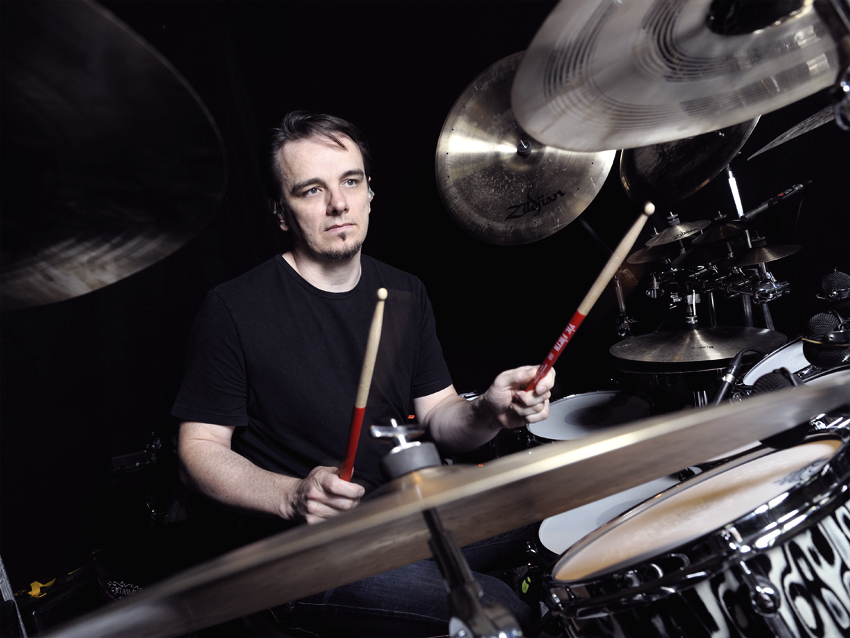
Breaking it down
Do you take the approach of breaking down odd times into smaller segments?
"I would never count to 11, it’s always broken down into smaller pieces, like a 6 and a 5 or two 4s and a 3. Seek the path of least resistance."
"If you can play a group of 3, which I’m sure every drummer can, and you can play a group of 2, which I’m sure every drummer can, then you can play odd times because every odd time can be broken down into groups of 2 or 3. It’s actually much simpler than you imagine."
"When you see bars of 11/8 written down they look absolutely terrifying and I wouldn’t want to sit and try to read something in 11 without knowing what the key is - if it’s two 4s and a 3, ‘Ah, right.’ You can play a 2 and 3, then you can play 5. Play two 2s and a 3, you can play 7. It’s as simple as that. I don’t like it to sound terrifying. I don’t like to write music that sounds clever. That’s never my intention."
You can read the full interview in Rhythm 183 (available now as a back issue), or check out the latest funk special issue 184 featuring Zigaboo Modeliste and Stanton Moore.
Liked this? Now read: Dave Grohl's drum setup revealed: Them Crooked Vultures
Connect with MusicRadar: via Twitter, Facebook and YouTube
Get MusicRadar straight to your inbox: Sign up for the free weekly newsletter
Tom Porter worked on MusicRadar from its mid-2007 launch date to 2011, covering a range of music and music making topics, across features, gear news, reviews, interviews and more. A regular NAMM-goer back in the day, Tom now resides permanently in Los Angeles, where he's doing rather well at the Internet Movie Database (IMDB).









